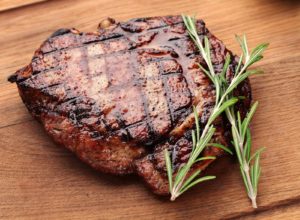Red meat,bacteria, and atherosclerosis.From Medical Xpress:
Why does red meat increase the risk for cardiovascular disease? Blame our gut bacteria
New research provides details on how gut bacteria turn a nutrient found in red meat into metabolites that increase the risk of developing heart disease. Publishing in the November 4th issue of the journal Cell Metabolism, the findings may lead to new strategies for safeguarding individuals' cardiovascular health.
Previous research led by Dr. Stanley Hazen, of Lerner Research Institute and the Miller Family Heart and Vascular Institute at Cleveland Clinic, revealed a pathway by which red meat can promote atherosclerosis, or hardening of the arteries. Essentially, bacteria in the gut convert L-carnitine, a nutrient abundant in red meat, into a compound called trimethylamine, which in turn changes to a metabolite named trimethylamine-N-oxide (TMAO), which promotes atherosclerosis. Now Dr. Hazen and his team extend their earlier research and identify another metabolite, called gamma-butyrobetaine, that is generated to an even greater extent by gut bacteria after L-carnitine is ingested, and it too contributes to atherosclerosis.
The discovery that metabolism of L-carnitine involves two different gut microbial pathways, as well as different types of bacteria, suggests new targets for preventing atherosclerosis—for example, by inhibiting various bacterial enzymes or shifting gut bacterial composition with probiotics and other treatments.

 Very interesting. Gives people a way to eat red meat, but not increase their colorectal cancer risk (by also eating resistant starch, e.g., potato salad or beans). From Science Daily:
Very interesting. Gives people a way to eat red meat, but not increase their colorectal cancer risk (by also eating resistant starch, e.g., potato salad or beans). From Science Daily: